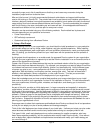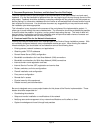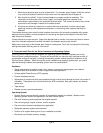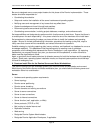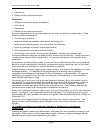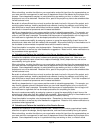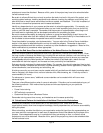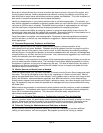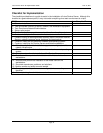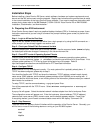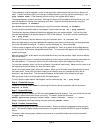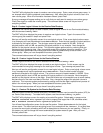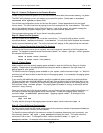
Be certain to allow sufficient time not only to perform the tasks involved in this part of the project, such
as doing system backups, installing equipment and software, checking for problems, and training, but
also allow time to record issues encountered, solutions created, and feedback. This initial investment of
time results in streamlined procedures and increased satisfaction.
Identify any dependencies in your process and be certain to schedule appropriately. For example, you
may need to upgrade the workstation’s operating system before you can install the client, and you should
not move on until this step is complete. Remember that the process of implementation can not begin
until the install team is organized and has developed procedures for completing the tasks.
Be sure to create accountability by assigning a person or group the responsibility of each item on the
schedule and a date when that item needs to be completed. Allow some flexibility in the schedule and in
the due dates to accommodate unexpected issues and the need for learning.
Once the schedule is complete, start implementation. Remember to document problems encountered
and their solutions, as well as any other feedback or suggestions. Make modifications to procedures
where appropriate.
15. Document Experiences, Problems, and Solutions
The most important item of this Domino implementation project is the documentation of the
administrator’s and end users’ feedback. Feedback should be gathered from the very beginning all the
way through the end of the project, once or twice a week. It should be shared by conducting meetings
with key players in the project and placed in a discussion database which will serve as a knowledge base
of issues and errors, and their solutions for future use. Also, document any suggestions you receive and
modify the installation plan when appropriate.
This information is very important to the success of the implementation project and allows you to plan so
as not to make the same mistakes twice. The information should be as detailed as possible, to include
the problem, its solution, and any and all steps along the way. This level of detail will be a key factor in
smoothing your Domino installation plan and provide a better chance of success and greater end user
satisfaction with the overall process.
16. Monitor Servers and Assist Users as Needed
Once the implementation plan has been completed, it’s time to monitor Domino Server usage and assist
end users. This can be considered as the “day to day” operations of a Domino environment. Without
getting into great detail about Domino Administration, you’ll probably want to monitor such things as disk
space, disk utilization, network bandwidth (especially over WAN connections), server response time,
shared memory segment and semaphore utilization, replication events, user name changes, and Domino
logs. Be prepared to help end users with possible error messages that may be encountered while using
the Notes client.
Make sure that documentation is maintained to collect problems and their solutions, as well as feedback
and suggestions. This feedback adds value to the knowledge base of information already collected for
future use in troubleshooting problems. This information should be readily accessible to all
administrators and support staff.
17. Correct any Potential Performance or Configuration Issues as They Are Identified
When any problem arises, the administrator should document the issue and identify a solution in a timely
manner. Keeping the servers fine-tuned is vital to a healthy Domino environment. Monitoring server
performance is a daily job, and should be done faithfully in order to maintain peak performance.
18. Follow Up Training for Administrators and End Users as Needed
As your Domino environment grows and matures, you may find it necessary to conduct additional
training for administrators, and new employees. Be prepared to provide this training as needed.
Lotus Domino Server R5 Implementation Guide June 18, 2001
Page 30



